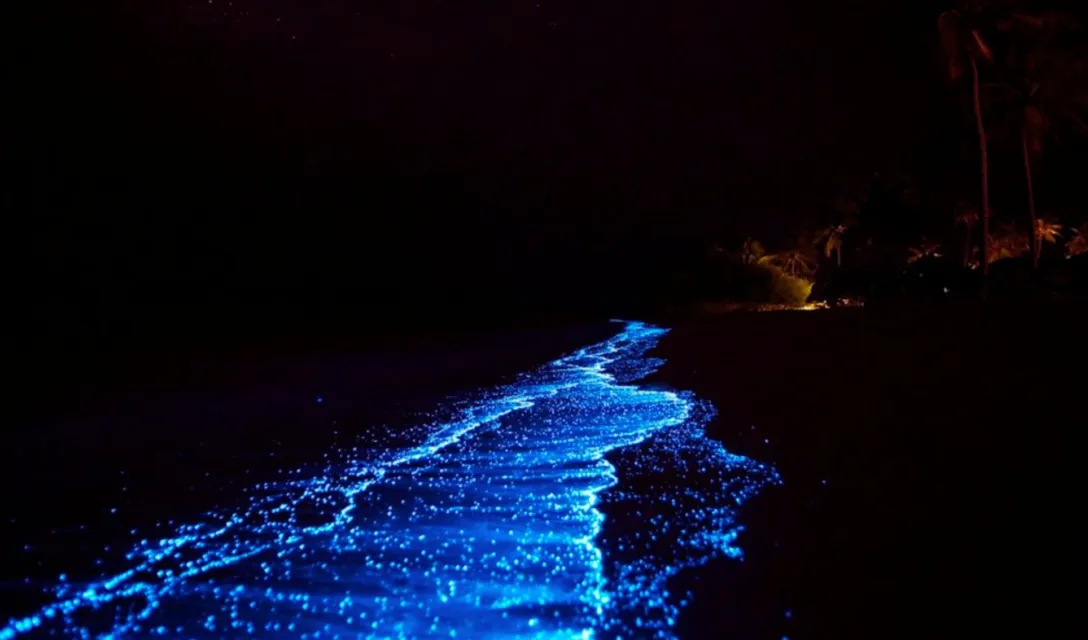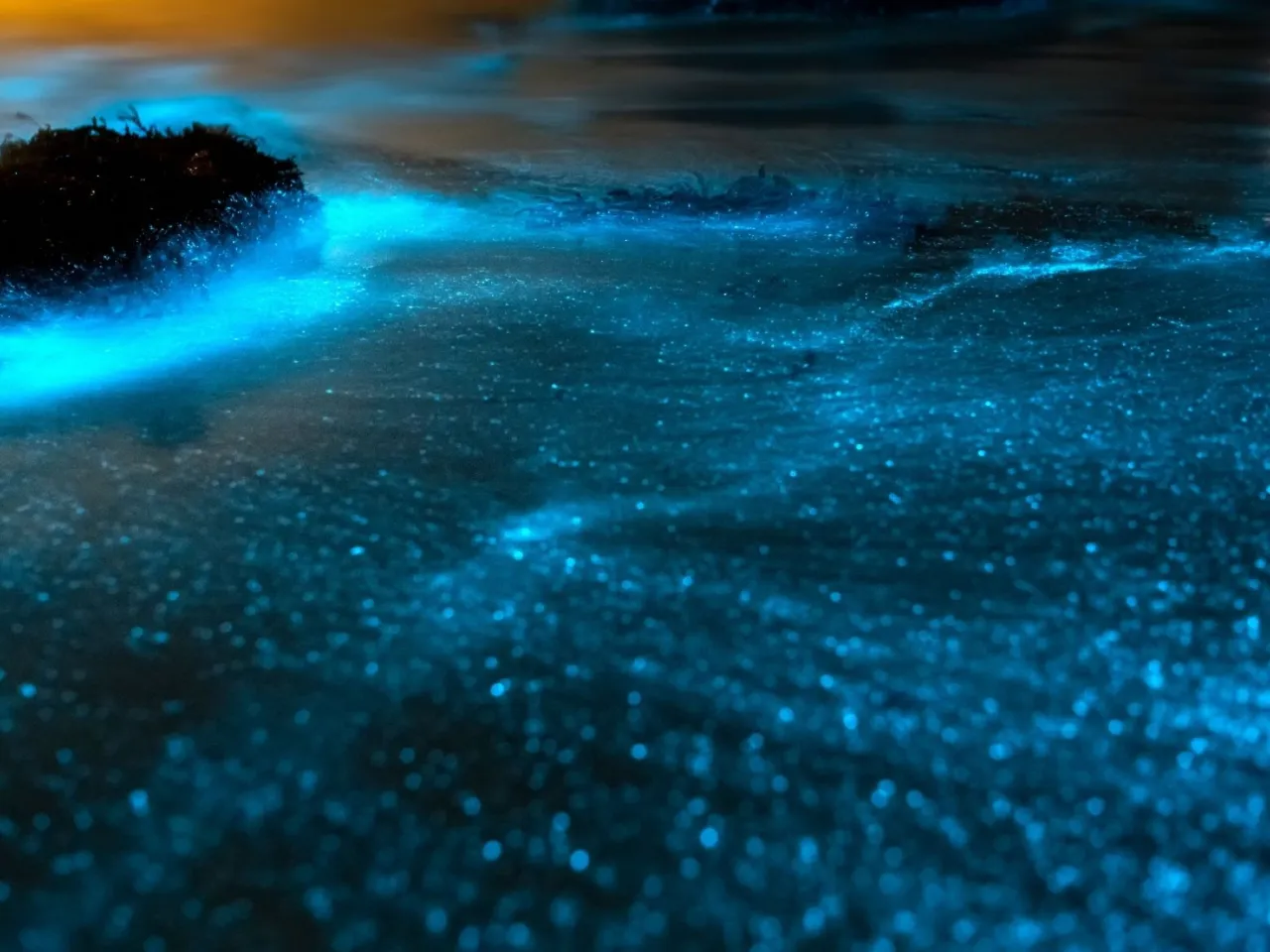Visit Glowing Beach on Vaadhoo Island
Tue Feb 27 2024

The Maldives is a breathtaking travel destination that is known for its sparkling, crystal-clear waters, white sandy beaches, and abundance of marine life. It's no surprise that tourists from around the world flock to this tropical paradise every year. However, not all of the Maldives' attractions are well-known. In fact, some of the most beautiful and unique destinations, together with Vaadhoo Island tourism in the Maldives, are hidden gems waiting to be discovered. One such hidden gem is the bioluminescent beaches of the Maldives.
What are Bioluminescent Beaches?
Before delving into the hidden gems of the Maldives, it's important to first understand what bioluminescent beaches are. A bioluminescent beach phenomenon is a natural event that occurs when certain types of marine life, such as plankton or jellyfish, produce a chemical reaction that emits light. When these creatures wash up on the beach, they create a stunning display of glowing blue or green lights that sparkle in the night.
Bioluminescent beaches are, therefore, unique in that they offer natural celestial illusions show unlike anything else. Some of the most famous bioluminescent beaches in the world include Mosquito Bay in Puerto Rico, Vaadhoo Island in the Maldives, and Gippsland Lakes in Australia.
The Hidden Gems in the Maldives
While Vaadhoo Island is certainly one of the most well-known glowing beaches in the Maldives, there are other hidden gems waiting to be discovered. These beaches are just as stunning as Vaadhoo Island, but with fewer crowds and a more intimate atmosphere best suited for your unique photo opportunities, perfect for your Instagram.
The Maldives is home to several bioluminescent beaches that are not to be missed. Here are a few of the top beaches to add to your list:
Bioluminescent Beaches in the Maldives
Vaadhoo Island Beach: Known for its bright blue bioluminescent plankton, this beach is a popular spot for visitors to experience the natural phenomenon.
Mudhdhoo Island Beach: This beach is known for its green glow-in-the-dark waters, which are caused by a type of bioluminescent phytoplankton called dinoflagellates.
Rangali Island Beach: Another popular spot to see bioluminescent plankton, visitors can experience a blue-green glow in the water during the right conditions.
Baa Atoll Beach: This beach is a great place to see bioluminescent plankton year-round and is also known for its beautiful coral reef.
These are just a few of the bioluminescent beaches that the Maldives has to offer. No matter which beach you choose to visit, you're sure to be amazed by the stunning natural beauty on a dazzling beach, building your unforgettable experience with anyone you love the most.

Useful Facts About The Glowing Beaches In The Maldives
Visitors to bioluminescent beaches in the Maldives can expect to see a stunning display of blue and green lights that sparkle in the night. Here are some of the best useful facts that you should know about the bioluminescent beaches in the Maldives:
Best time to see the bioluminescence
The bioluminescence is most visible during the new moon phase when the night sky is at its darkest. Considering weather and tide patterns when planning your visit to coincide with the new moon phase will increase your chances of seeing the bioluminescence in its full glory.
Nighttime is the best time to experience the bioluminescence
The bioluminescence is best experienced at night when the beach is dark, and the lights are most visible. Visitors should plan to visit the beach after sunset to experience the full effect of the bioluminescence and consider nighttime beach activities to get the best of the experience.
The blue and green lights are most visible in the dark
The bioluminescent lights are most visible in dark conditions, so visitors should be prepared for darker conditions and bring flashlights or headlamps to navigate their way on the beach.
Visitors should be prepared to navigate in the dark
As mentioned, bioluminescent beaches are best experienced at night, so visitors should be prepared to navigate in the dark. Bringing a flashlight or headlamp will help visitors navigate the beach and enjoy the bioluminescence safely.
Visitors should avoid swimming or disturbing the water
It's important to remember that bioluminescent plankton and other marine life are sensitive creatures that can be easily harmed. Visitors should avoid swimming or disturbing the water to protect the ecosystem and marine life.
It's important to note that while bioluminescence is a natural phenomenon, visitors should still take precautions to protect the beach and marine life. This means avoiding swimming or disturbing the water, as this can disrupt the ecosystem and harm the creatures that create the bioluminescence.
How to Get to Bioluminescent Beaches in the Maldives
Getting to bioluminescent beaches in the Maldives can be a bit challenging, as many of them are located on smaller islands that require transportation by boat or seaplane. Visitors can typically arrange transportation through their resort or hotel or by booking a tour with a local company. It's important to plan ahead and book transportation in advance, as some of the more hidden beaches may require a longer journey. And here are some useful tips you may use before your trip:
Research the best time to visit: The bioluminescence is most visible during the new moon phase, so check the lunar calendar to plan your visit accordingly.
Choose the right location: Not all beaches in the Maldives have bioluminescent plankton, so do some research to find the best beaches to visit.
Book accommodations in advance: The Maldives is a popular destination and accommodations can fill up quickly, especially during peak travel seasons. Book your accommodations well in advance to avoid disappointment.
Pack appropriate gear: Visitors should bring flashlights or headlamps to navigate in the dark, and also consider bringing insect repellent to protect against mosquitoes.
Respect the environment: Bioluminescent plankton and other marine life are sensitive creatures, so visitors should avoid swimming or disturbing the water to protect the ecosystem and marine life.
Hire a local guide: A local guide can provide insider knowledge to optimize local cultural experiences on the best places to visit and help you navigate the beach safely.
Enjoy the experience: Bioluminescent beaches are a unique and unforgettable experience. Take your time, relax, be patient, and just enjoy the natural beauty on display.

Don’t Miss Out
The bioluminescent beaches of the Maldives are truly a wonder of nature and a must-see for any traveler visiting the region. With its crystal-clear waters, white sandy beaches, and breathtaking marine life, the Maldives offers a unique travel experience that's second to none.
Whether you are a first-time visitor or a seasoned traveler, the bioluminescent beaches of the Maldives are sure to leave you awestruck. Plan your trip today to experience the beauty of these natural wonders for yourself.
For those interested in experiencing the best that the Maldives offers, we recommend visiting Maldives Exclusive. Our team of travel experts can help you plan your perfect Maldives vacation, including recommendations on the best bioluminescent beaches to visit, accommodations, and more. Don't miss out on this once-in-a-lifetime experience, visit https://www.maldivesexclusive.com/ today.